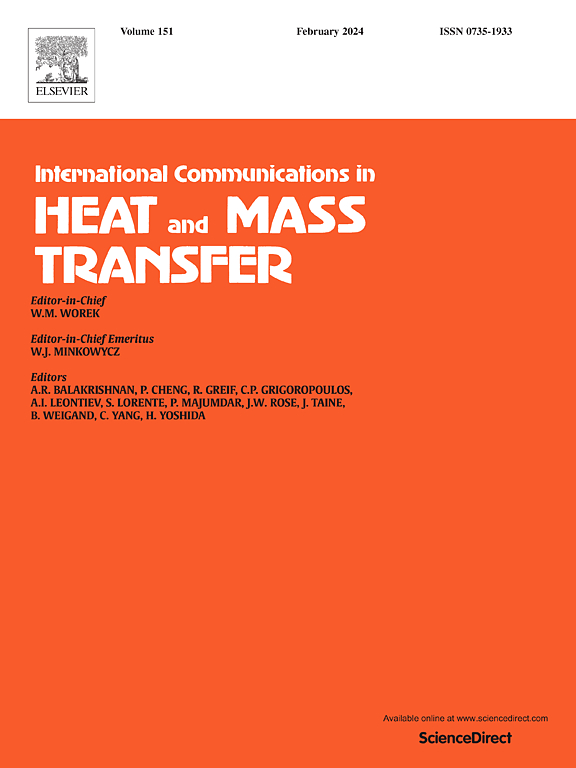Numerical investigation and optimization of heterogeneous-homogeneous coupled condensation in steam turbines of tower solar power system
IF 6.4
2区 工程技术
Q1 MECHANICS
International Communications in Heat and Mass Transfer
Pub Date : 2024-11-16
DOI:10.1016/j.icheatmasstransfer.2024.108336
引用次数: 0
Abstract
The significant potential for stage efficiency improvement is in steam turbines of solar thermal power plants, which operate in difficult atmospheric conditions contributing to the high pressure in the condenser and steam impurities. Presented study aims to examine the influence of three steam impurities on the condensing flow through turbine stage rotor. Firstly, the modified condensation model is validated using experimental data. Next, the flow characteristics and losses of pure steam and steam containing heterogeneous particles in three-dimensional turbine are investigated separately, and the effects of particles on the flow process and system performance are analyzed. Finally, the effect of backpressure on the condensation flow and the turbine performance is investigated. The results reveal that homogeneous condensation predominantly occurs at higher blade height, NaCl particles have the most significant impact on condensation. At a particle concentration of , the thermal efficiency of heterogeneous condensation on solid particles and tiny droplets increases by 1.6 % and 2.3 %, respectively, compared to homogeneous condensation. Conversely, NaCl particles exhibit a reduction of 0.2 %. Lastly, by strategically raising the backpressure, it is feasible to decrease the humidity on the final stage blades, enhancing thermal efficiency and ultimately optimizing tower solar power generation system operation.
塔式太阳能发电系统蒸汽轮机中异质-均质耦合凝结的数值研究与优化
太阳能热发电厂的蒸汽轮机在大气条件恶劣的情况下运行,冷凝器压力高,蒸汽杂质多,这对提高汽轮机的阶段效率具有很大的潜力。本研究旨在探讨三种蒸汽杂质对通过汽轮机转子的凝结流的影响。首先,利用实验数据验证了修改后的凝结模型。然后,分别研究了纯蒸汽和含有异质颗粒的蒸汽在三维汽轮机中的流动特性和损失,并分析了颗粒对流动过程和系统性能的影响。最后,研究了背压对凝结流和汽轮机性能的影响。结果表明,均匀凝结主要发生在叶片高度较高的位置,NaCl 颗粒对凝结的影响最大。当颗粒浓度为 1015 1/kg 时,固体颗粒和微小液滴上的异相凝结热效率比均相凝结分别提高了 1.6% 和 2.3%。相反,氯化钠颗粒的热效率则降低了 0.2%。最后,通过有策略地提高背压,可以降低末级叶片上的湿度,提高热效率,最终优化塔式太阳能发电系统的运行。
本文章由计算机程序翻译,如有差异,请以英文原文为准。
求助全文
约1分钟内获得全文
求助全文
来源期刊
CiteScore
11.00
自引率
10.00%
发文量
648
审稿时长
32 days
期刊介绍:
International Communications in Heat and Mass Transfer serves as a world forum for the rapid dissemination of new ideas, new measurement techniques, preliminary findings of ongoing investigations, discussions, and criticisms in the field of heat and mass transfer. Two types of manuscript will be considered for publication: communications (short reports of new work or discussions of work which has already been published) and summaries (abstracts of reports, theses or manuscripts which are too long for publication in full). Together with its companion publication, International Journal of Heat and Mass Transfer, with which it shares the same Board of Editors, this journal is read by research workers and engineers throughout the world.

 求助内容:
求助内容: 应助结果提醒方式:
应助结果提醒方式:


